Pancit Bihon Guisado
Pancit is a savory noodle dish that comes in all sorts of variations. From stir-fried to soupy, this is a beloved noodle dish in Filipino cuisine that’s not just about filling your belly, but also about celebrating good times with family and friends.
This post may contain affiliate links. Please read our disclosure policy.
Pancit or Bihon Guisado is a popular Filipino noodle dish made from rice stick noodles (which is commonly referred to as “bihon”). This dish is a staple in Filipino special occasions. I personally enjoy it when paired with Lumpia.

Pancit Origins
Pancit originated from the Chinese and was adopted to suit the Filipino palate. The Hokkien phrase “pian i sit” is actually where the dish’s name comes from. And this can be translated into “something cooked fast” or “something conveniently cooked fast.” This is because this originally meant to describe convenience food.
This can range from your protein-filled pork and meat to your carb component of pancit bihon to the wide variety of vegetables you’ve also got on your plate. All of these come together to create a most harmonious recipe with different flavors. Its etymology also probably explains the Chinese influence on the dish. After all, we can trace back the history of this dish in the oldest Chinatown in the world during the 16th century.
Many have theorized that Chinese traders brought their noodles over to the Philippines, and soon craved more of it while they were in the country. With rice flour being widely available in the Philippines, they created rice noodles that were actually simpler to cook than wheat noodles. And during the Spanish colonization era, this soon became the meal of choice for women factory workers who couldn’t take too much time in the kitchen.

How To Cook Pancit
prep the bihon and sauté aromatics
- Prepare the bihon by soaking it in a container of water.
- Next, heat the oil in a large wok.
- After that, toss in the garlic and onion and sauté until your kitchen smells amazing!
cook the meat
- Afterward, add the pork and chicken to the wok, letting them cook for about 2 minutes until they’re nicely browned and juicy.
season and simmer
- Next, sprinkle in the chicken powder and pour in the water.
- Then give it a good stir and let everything simmer for 15 minutes, letting all those flavors meld together.
blanch vegetables
- Time to add some color and crunch! Toss in the carrots, snow peas, cabbage, and celery leaves.
- Simmer for a few minutes until the veggies are tender and vibrant.
- Scoop out the veggies and meat, leaving just the savory liquid behind. Do not overcook the vegetables.
add soy sauce and bihon
- Stir in the soy sauce, mixing well to infuse all that umami goodness.
- Remove the bihon from the soaking water and add it to the pot, giving it a good mix.
- Cook until the liquid has completely evaporated and the noodles are perfectly coated.
serving time!
- Throw the veggies and meat back into the pot, and let everything simmer together for a minute or two.
- Congratulations on making my pancit recipe! Serve hot, and get ready to enjoy a delicious, flavorful meal!
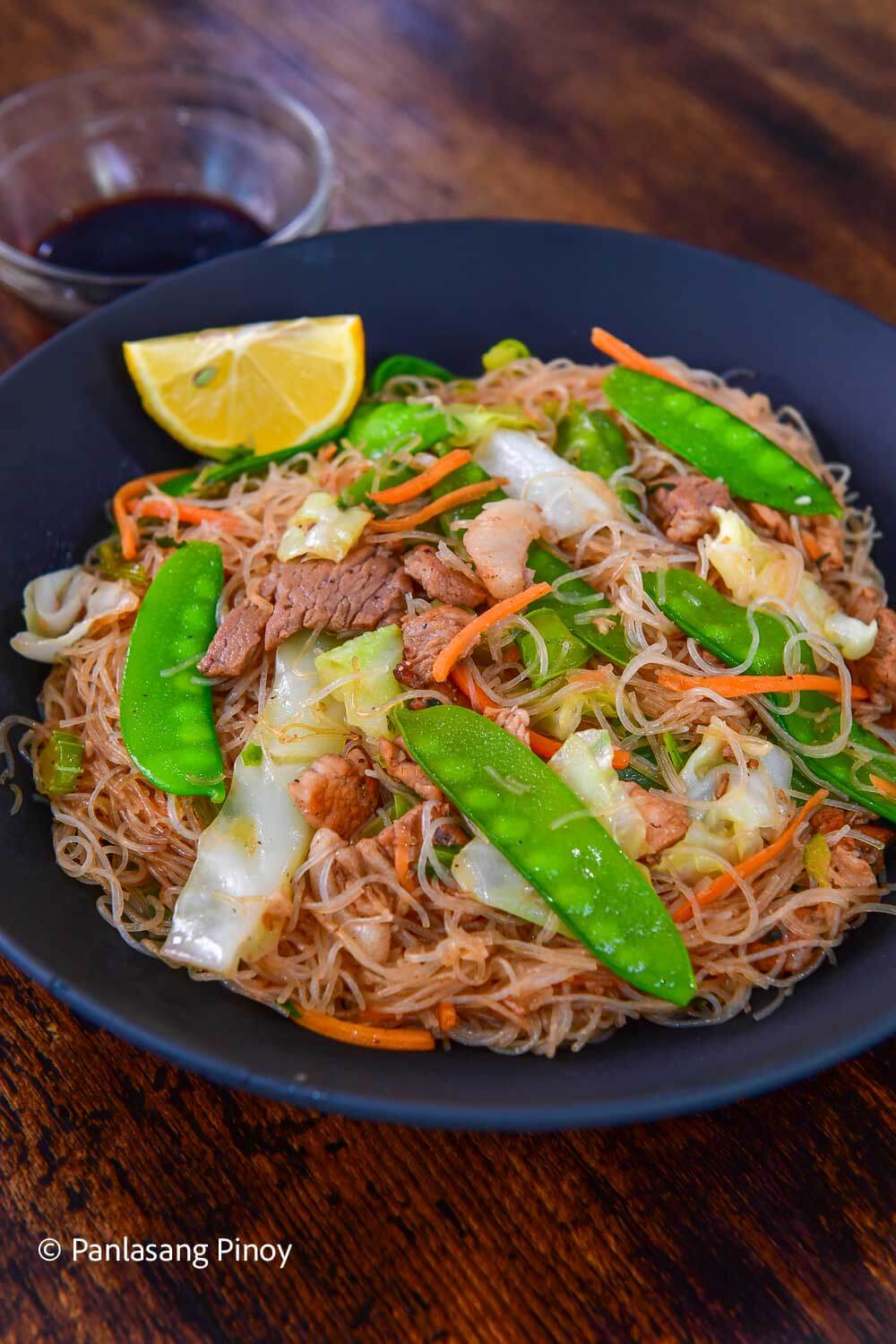
How To Serve Pancit
To serve this guisado recipe, traditionally, Filipinos enjoy it with a side of white bread or crispy lumpiang shanghai or fried chicken, especially during birthday celebrations! Serve it hot, with a fork and a side of calamansi. Squeeze half a calamansi—or more, depending on how tangy you like it—onto your plate to balance out the umami flavors of the pancit. Don’t forget to pair it with some cold drinks for a refreshing contrast. Enjoy the fun and flavors of this classic dish!
How to safely store pancit?
Begin by waiting to get that pancit down to room temperature. This especially applies to a situation wherein you’ve just cooked up your pancit, and still have it piping hot. Just take your airtight container, and place your pancit inside. Then you can keep it refrigerated for about 5 days without it going bad.
Shelf Life Of Pancit And How To Reheat It
Pancit guisado can sit at room temperature for about 2 hours before it needs to be refrigerated. If you want to save it for another day, just pop it into an airtight container and stash it in the freezer.
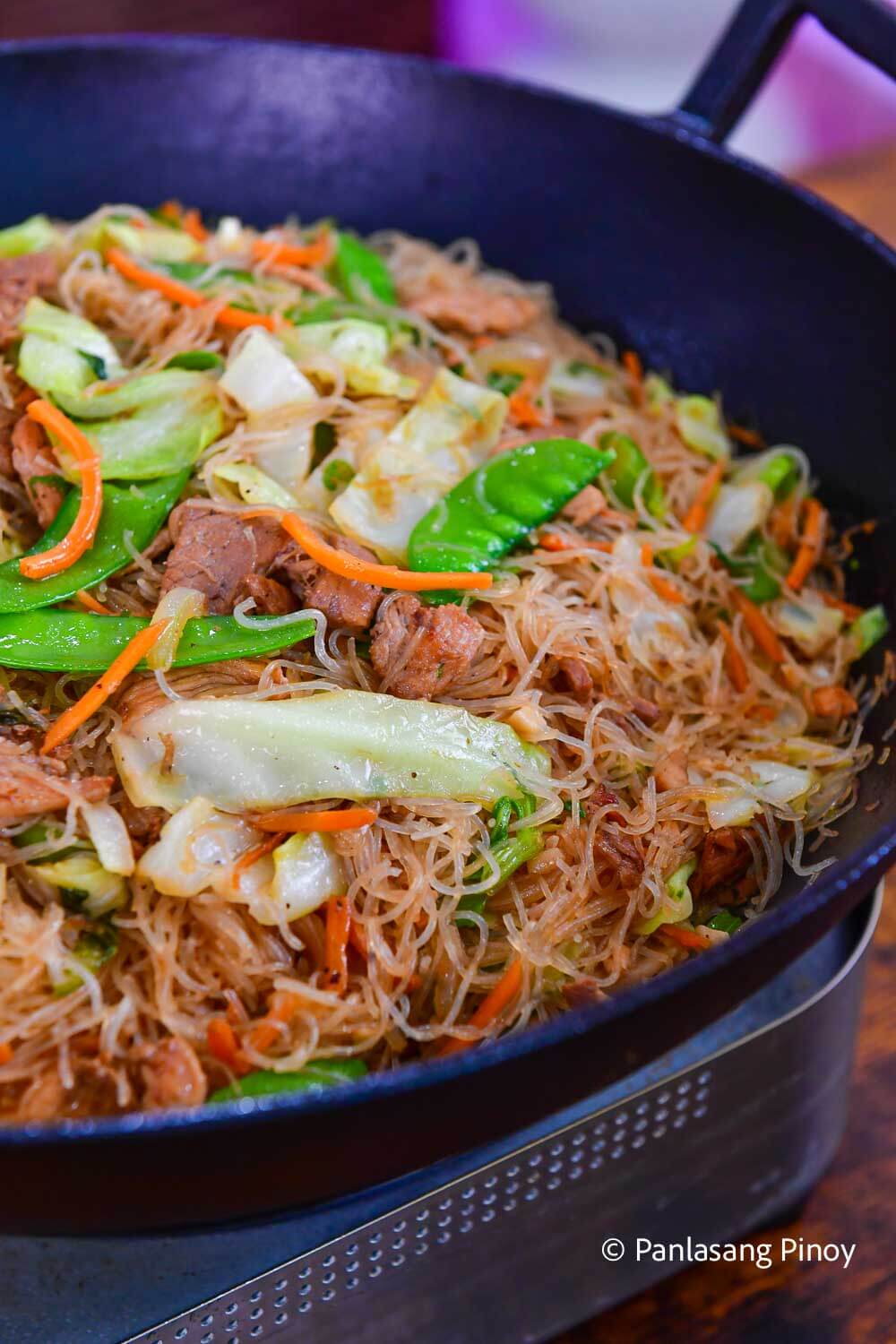
To make your pancit taste nearly as good as new, you can microwave it. Don’t forget to wait for it to thaw if it comes out of the freezer. Just cover the container with a lid or a damp towel to prevent it from drying out. Microwave for about 1 to 2 minutes.
Try this Pancit Recipe and let me know what you think.
Did you make this? If you snap a photo, please be sure tag us on Instagram at @panlasangpinoy or hashtag #panlasangpinoy so we can see your creations!

Pancit Bihon Recipe
Ingredients
- 1 lb pancit bihon Rice Noodles
- 1/2 lb. pork cut into small thin slices
- 1/2 lb. chicken cooked, deboned, and cut into thin slices
- 1/8 lb. snow peas
- 1 cup carrot
- 1/2 small cabbage chopped
- 1 cup celery leaves chopped finely
- 1 onion chopped
- 1/2 tbsp garlic minced
- 2 teaspoons chicken powder
- 5 tbsp soy sauce
- 3 to 4 cups water
- 3 tbsp cooking oil
Instructions
- Heat the oil in a large wok. Saute garlic and onion1 onion, 1/2 tbsp garlic, 3 tbsp cooking oil
- Add the pork and chicken then let cook for 2 minutes1/2 lb. pork, 1/2 lb. chicken
- Add the chicken powder and water then simmer for 15 minutes2 teaspoons chicken powder, 3 to 4 cups water
- Put in the carrots, snow peas, cabbage, and celery leaves and simmer for a few minutes1/8 lb. snow peas, 1 cup carrot, 1/2 small cabbage, 1 cup celery leaves
- Remove all the ingredients in the pot except for the liquid and set them aside
- In the pot with the liquid in, add the soy sauce and mix well5 tbsp soy sauce
- Add the pancit bihon (makes sure to first soak it in water for about 10 minutes) and mix well. Cook until liquid evaporates completely1 lb pancit bihon
- Put-in the vegetables and meat that were previously cooked and simmer for a minute or two
- Serve hot. Share and enjoy!

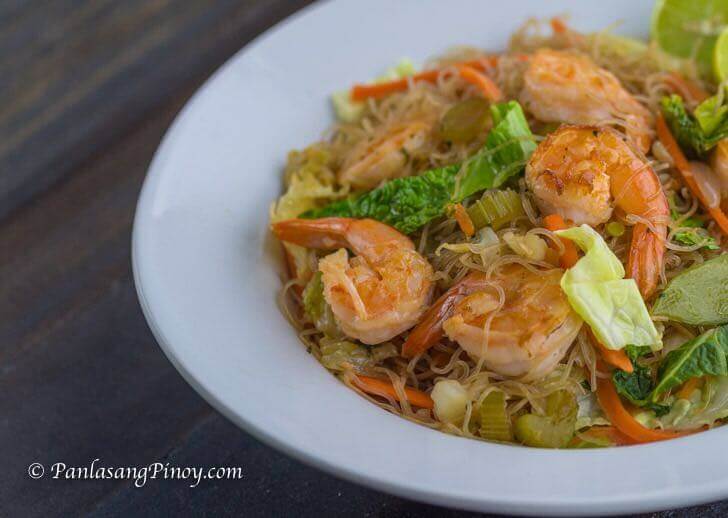
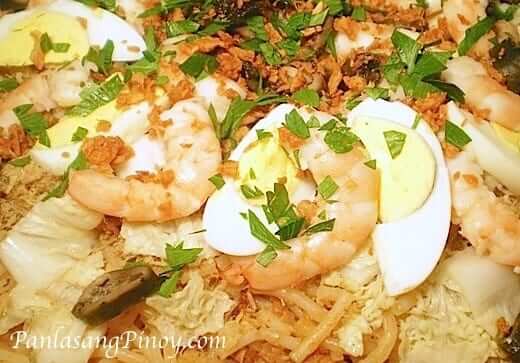
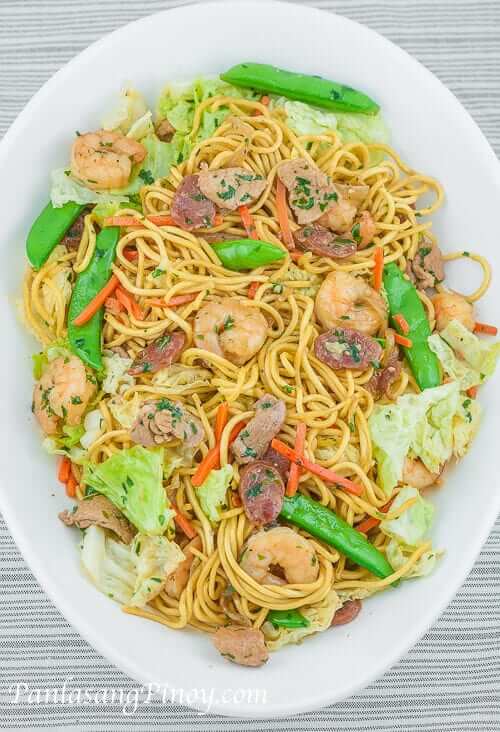
Lourdes Tayas says
Clear and simple
Vanjo Merano says
Thank you. Glad you thought so.
Cathy says
This was delicious, but I’d put in twice the meat. And it makes a LOT.
dulce says
it’s awesome !sobrang dami ko natutunan mga recipe. thanks
Nita says
Very nice and easy, will recommend it to others.
Jhonnie says
Simple at sarap!
Amber Harding says
So simple and delicious! I’m Filipino and my family LOVED it! Thank you for sharing this recipe 🙂
Hobbie Gill says
Love the dishe
Honey Lee vlog says
Pansit bihon of vanjo merano is always the best
Manuel J Alafriz says
Superbly explained and demonstrated
CASCABEL,ROSE D. says
i love the taste!!!one of my favorite food.
peter says
very understandable instruction clearly he knew what he’s doing
Maria Rowena Sobrado says
My favorite and its yummy
Alma says
Nice